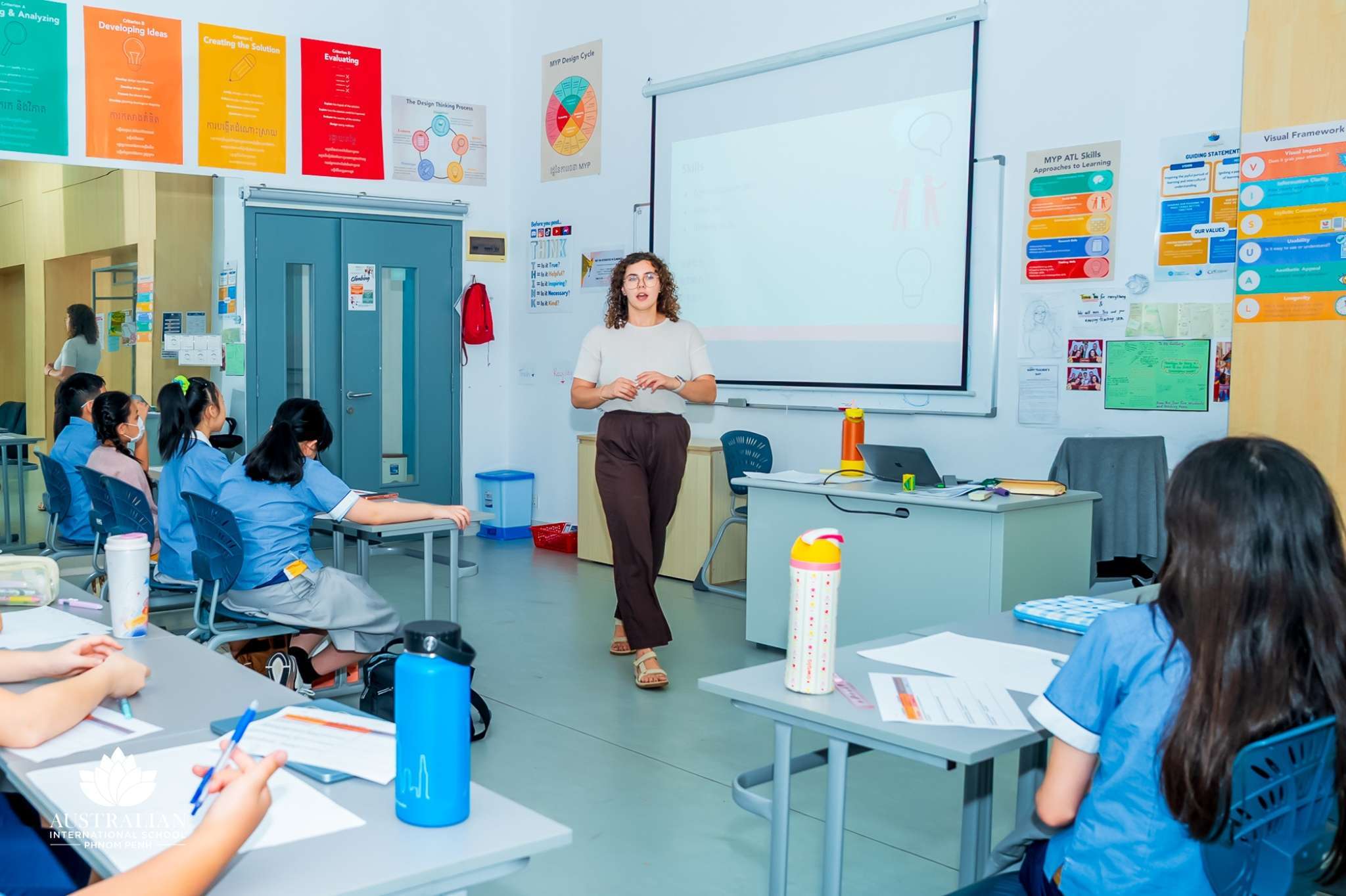Students at Australian International School Phnom Penh (AISPP) recently took part in a dynamic gallery walk critique, where Year 6 learners analysed each other’s album cover designs, shared feedback, and reflected on how well their ideas met project goals. This activity highlights a powerful shift in modern education—moving from passive learning to active, student-centered engagement. In Cambodia’s growing international education landscape, meaningful learning experiences like these help students build not only academic skills but also confidence, collaboration, and creative problem-solving.
In today’s blog, we explore how gallery walk strategies support 21st-century learning and why schools such as AISPP are leading the way.
Gallery Walks: A Hands-On Approach to Creative Learning
The target keyword “AISPP Phnom Penh” is central to understanding why this learning approach stands out. At AISPP Phnom Penh, learning is intentionally designed to be interactive and reflective. Through the gallery walk, students rotated around the classroom, reviewing classmates’ album artwork displayed on the walls. Instead of simply listening to a teacher’s evaluation, students became active participants—discussing, critiquing, collaborating, and thinking visually.
This form of learning builds essential skills: critical thinking, visual literacy, and communication. By explaining their design choices, students develop the ability to articulate ideas clearly—an invaluable skill for later academic and professional success.
Encouraging Reflective Thinking Through Peer Feedback
One of the strongest features of a gallery walk is the opportunity for structured peer feedback. Year 6 students at AISPP were encouraged to look at each album cover and reflect on elements such as:
-
Colour choices
-
Typography
-
Layout and spacing
-
How well the work matched the creative brief
These conversations help students develop a growth mindset. They learn that feedback is part of the learning journey—not something to fear. Students also gain confidence by seeing how others interpret the same task in different ways.
In Cambodian education, where examinations often take center stage, approaches like these allow teachers to highlight creativity, independence, and problem-solving.
Why Activities Like This Matter for Cambodia’s Education Landscape
As more families consider quality international or private schooling choices, activities such as the AISPP gallery walk demonstrate the value of modern teaching methods. These practices help schools stand out because they:
-
Encourage interdisciplinary thinking
-
Build communication skills naturally
-
Create a supportive classroom culture
-
Allow students to express themselves through art and design
-
Promote teamwork and mutual respect
Schools that integrate such active learning show their commitment to preparing children for a global future—where creativity, adaptability, and critical thinking are essential.
A Supportive and Engaging Environment
The images shared by AISPP reflect bright classrooms filled with colourful student work, collaborative seating arrangements, and teachers guiding students through meaningful discussions. It’s clear that AISPP Phnom Penh values learning environments where every child feels encouraged to think, participate, and experiment with ideas.
From the gallery walk setup to the thoughtful peer critique, this activity highlights how hands-on learning can build deeper understanding and stronger academic engagement.
If any information about this school needs updating or correction, please Contact us
To register your school on our platform, Click Here








Leave A Comment